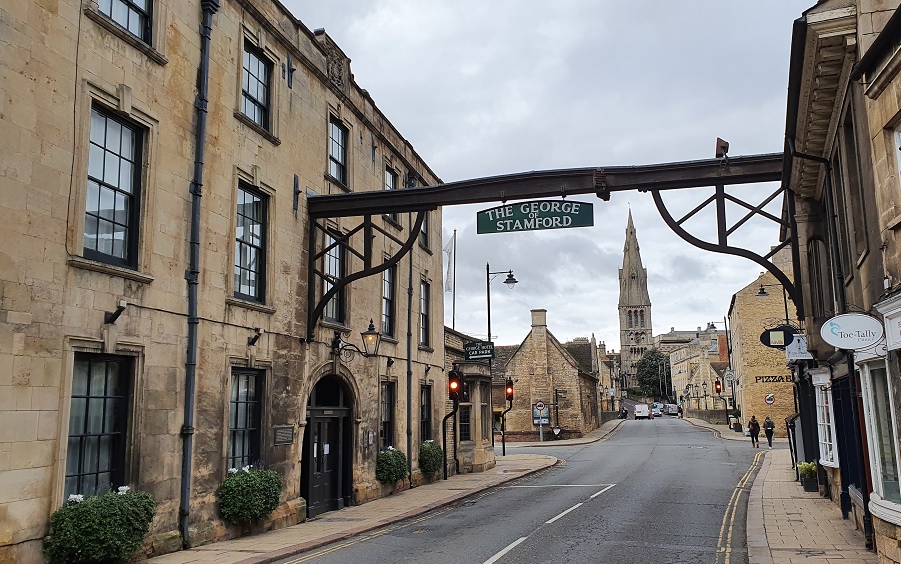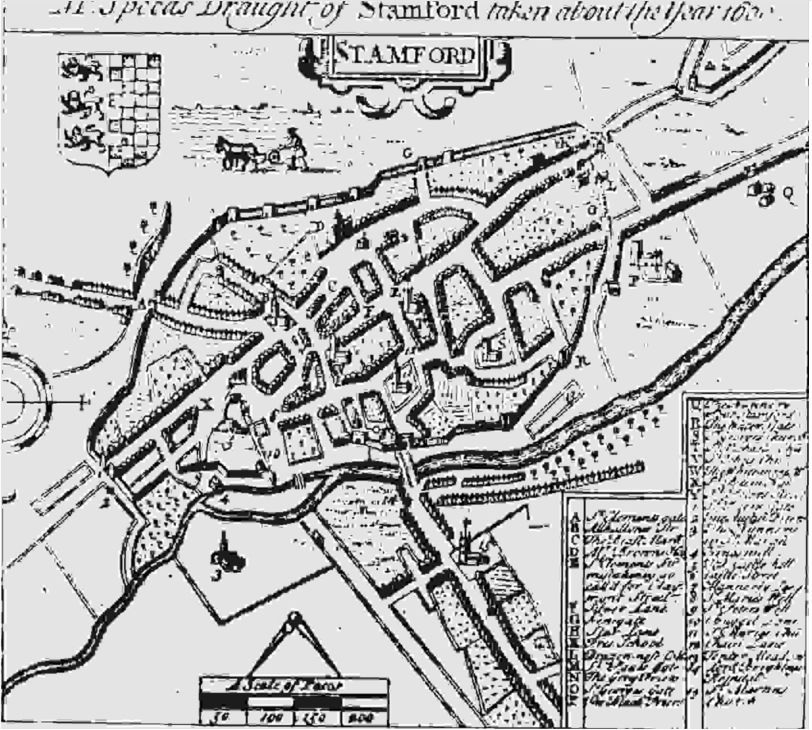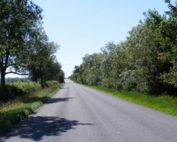Stamford and the Great North Road
Ermine Street crossed the River Welland close to the current town, heading to the Roman town at Great Casterton slightly to the north (where Ermine Street crossed the smaller River Gwash).
Stamford prospered during the medieval period and as the post road developed so did the town’s coaching inns.
The 20th century A1 snaked through its otherwise unspoilt Georgian buildings until 1960 when a by-pass to the west accelerated the north-south traffic and left the town to its more traditional role as a charming backwater.
About Stamford
Stamford developed from an Anglo Saxon settlement and by the 10th Century the town had become one of 5 controlling boroughs of Danelaw. By the 13th Century it was one of the 10 largest towns in England, with a castle, 14 churches, 2 monastic institutions and 4 friaries. The wool trade was a foundation of its economic prosperity though by the 15th Century this was being lost to other centres in East Anglia.
William Cecil, secretary of state to Queen Elizabeth I, was locally born. He built a palatial mansion just outside Stamford for his mother. Burghley House survives as one of the finest Elizabethan houses in the country.
In the late 17th Century Stamford was boosted by improvements to the Great North Road and the construction of the canal to Market Deeping which re-opened the town to river traffic. Prosperous merchants were attracted to the town leaving a legacy of fine Georgian houses. The coaching trade elevated old medieval inns like the George into nationally renowned hostelries.
Events in the 1960s unusually served to preserve the historical centre of the town. Following construction of the by bypass, Stamford was the first conservation area to be designated under the Civic Amenities Act 1967.
Explore Stamford
The images below provide links to additional information either on this website or elsewhere.
Stamford Then and Now


British Pathe newsreel showing the opening of the Stamford by-pass in 1960
Stamford town plan c 1600 – John Speed

John Bangay guide to the Georgian town.
Cribb v Molineaux
The Cribb v Molineaux boxing match to decide the English title took place close to the Great North Road in 1811. It is claimed to have drawn a crowd of 20,000 to a field at Thistleton...
The Ram Jam Inn
The Ram Jam at Stretton grew from being a modest village inn to a Great North Road institution. Where did the "Ram Jam" name come from? And what's the link...
Burghley House
The route of Ermine Street runs through the Burghley estate and remains a public footpath. The Great North Road ran alongside the estate as the road winds...
The Eleanor Crosses
The Eleanor Crosses constructed in the 1290s to commemorate the passing of the queen were prominent landmarks alongside the Great North Road at Grantham...
Whittlesea Mere
Until the 1850s Whittlesea Mere was one of the largest lakes in England. It had long been a rich source of fish and wildfowl – and by the 18th century it was also attracting...
The George, Stamford
The George at Stamford vies with the Angel at Grantham as the country’s oldest surviving coaching inn. Its distinctive wooden arch over the Great North Road...
Baker Perkins
Engineering company, Baker Perkins, operated an overnight Great North Road trunker service between its factories at Peterborough and on Tyneside...
Ermine Street
The southern section of Ermine Street aligns closely with the Old North Road, merging with Great North Road near Godmanchester, before heading eastwards...
RAF Wittering
RAF Wittering is located just south of Stamford, Lincolnshire. It was the “Home of the Harrier” and for several decades has been marked by a Harrier Jump Jet anchored...
Stilton Cheese
King of Cheeses. Stilton is recognised across the world as a unique and special variety. Its initial commercial success was the direct result of its popularity with coach...













